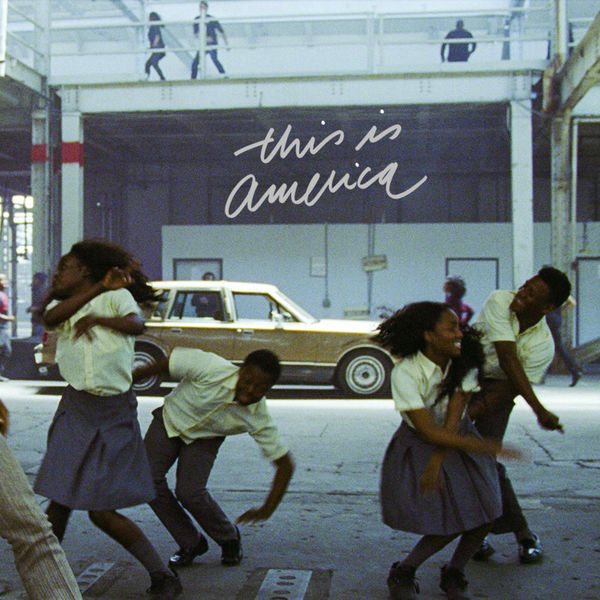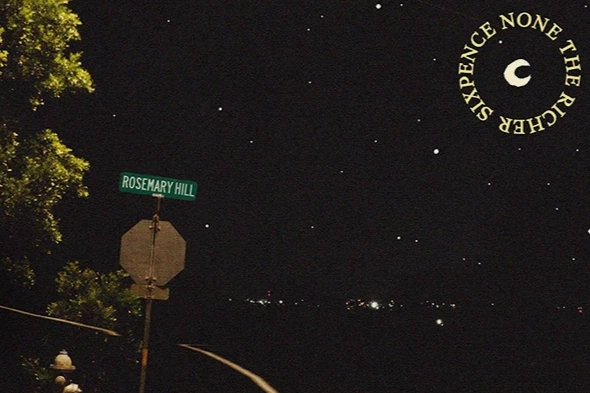The 21st-century workforce can be defined by, in a word, specialization. Then again, Donald Glover has been an exception to the rule his entire life. A “triple threat” in every sense of the term, Glover boasts an unprecedented array of credits in the modern entertainment landscape, garnering numerous accolades for both his music and his performances on the big and small screen. After bursting onto the scene as a writer for the NBC sitcom 30 Rock, he has also dabbled in stand-up comedy, produced and starred in his own television series, FX’s Atlanta, appeared in films ranging from The Martian to Spider-Man: Homecoming and was cast as Lando Calrissian in the upcoming Solo: A Star Wars Story.
While hosting Saturday Night Live May 5, Glover also doubled as his own musical guest and debuted his latest song “This Is America.” The accompanying music video was simultaneously released on YouTube, soaring to 55 million views in just four days.
Certain that there was a multitude of symbolism which had slipped past me upon first viewing the video, I consulted everybody from my friends to complete strangers in the most obscure corners of the internet. The only consensus I was able to discern was that there is none. Even after meticulous dissection of all 244 seconds, Glover has remained mum on the messages embedded in the video’s nuances. What he crafted was the end goal for any artist: a platform that fosters meaningful discussion.
The controversy-sparking video opens innocuously enough in a dilapidated warehouse amid the overlay of a festive, jovial choir. This segment fixates on the history of racism in the United States as Glover—wearing gray pants similar to those belonging to the Confederate States Army—dances with exaggerated gestures and facial expressions that, as some have noted, resemble 19th century Jim Crow caricatures.
Both the song and video take a darker turn when the beat abruptly flips from jubilant to an aggressive trap cadence. Glover removes a gun from his back pocket and fires a bullet directly through a man’s bag-covered head as he crumples to the floor. Before the body even makes contact with the ground, a boy rushes into frame with a red cloth not to assist the victim, but to carefully take the weapon from Glover, seemingly implying that America treats its firearms with more care than its citizens. The critique of gun violence in the United States continues as Glover exits the scene gleefully dancing, perhaps a commentary on the normalization of shootings and the brief shelf life these tragedies have in the public eye.
While the camera follows Glover and a group of dancing children, a look beyond them reveals the utter chaos ranging from the Horseman of the Apocalypse to suicide to riots transpiring in the background, much like how pop culture can easily distract mainstream society from addressing important social issues. The video then shifts to Glover gunning down an entirely African American choir, a brutal sight evocative of the 2015 Charleston church shooting. The next verse includes the lines, “This a celly/That’s a tool/On my Kodak,” which like so many others in “This Is America” do not lend themselves to a single clear interpretation. They could reference 22-year-old Stephon Clark, who was shot and killed by Sacramento police officers after they mistakenly identified his cell phone as a gun, or how cell phones have been utilized to record numerous acts of police brutality. Even Glover’s dance moves–one of them being the South African gwara gwara–were chosen with careful intent.
When Glover brings his arms together to form an imaginary gun, the music pauses and the children frantically scamper away as silence overtakes the video after a lone scream and the sound of a door slamming shut. Seventeen seconds elapse before the song resumes, one for each life claimed in the Marjory Stoneman Douglas High School shooting. Lyrics such as “One, two, three, get down!” illustrate the perpetual tension and fear that the African American experience entails. A phrase usually associated with dancing and partying now carries the connotation of ‘getting down’ in a literal sense to avoid bullets.
The video draws closer to its conclusion as the camera zooms out, displaying the same worn-down warehouse containing only antiquated cars. In spite of all the events that could have inspired reform, no progress has been made since the beginning of the video. The final frames show Glover running down a dark hallway as a mob chases him, reminiscent of Jordan Peele’s film “Get Out” that delivers a message about the struggles African Americans face in attempting to escape systemic racism, a theme that could also be applicable to Glover’s music video.
“This Is America” is a work of art filled with symbolism and allusions that seamlessly interweave discussions of police misconduct, racism and gun violence into a thorough depiction of life as an African American in the United States. The song and music video in tandem arrive at a time when the political climate in the United States calls for a national dialogue regarding the societal issues that confront us. Many songs today require little more analysis than spotting thinly-veiled references to sex, drugs and a lavish party lifestyle, a stark contrast from the hours I have poured into watching and rewatching Glover’s video in search of the next thought-provoking symbol that I failed to observe in the previous viewing. “This Is America” provides an insightful perspective on the state of this nation like few other works in recent memory.
The Pathfinder gives “This Is America” a 10/10.




![There are more than 20 open cardio machines at Crunch Fitness. I enjoyed the spacious environment at Crunch, a sentiment that was shared by sophomore Sanjana Daggubati. “[Going to] Crunch Fitness was the right decision because [it] feels more professional. Crunch’s workers are laid back, but not to the point where they don't care,” Daggubati said.](https://pwestpathfinder.com/wp-content/uploads/2025/09/IMG_5242-1-1200x900.jpg)

![Various empty Kit Kat wrappers crowd the desk, surrounded by scoring sheets. While production of Kit Kat flavors in the U.S. is limited, Nestlé, the owner of Kit Kat, manufactures hundreds of unique flavors in Japan, including the flavors ocean salt and passion fruit. “I thought there [were] some interesting flavors, and a lot of them were really unexpected,” senior Elle Levesque said.](https://pwestpathfinder.com/wp-content/uploads/2025/09/image-2.png)


![Pantone’s selection of the 2025 Color of the Year is revealed: Mocha Mousse. Ceramics teacher Ashley Drissell enjoys this year’s selection. “Maybe it’s the name but [Mocha Mousse] reminds me of chocolate and coffee. It makes me hungry. It’s very rich and decadent,” Drissell said.](https://pwestpathfinder.com/wp-content/uploads/2025/02/DSC_0015-1200x800.jpg)



